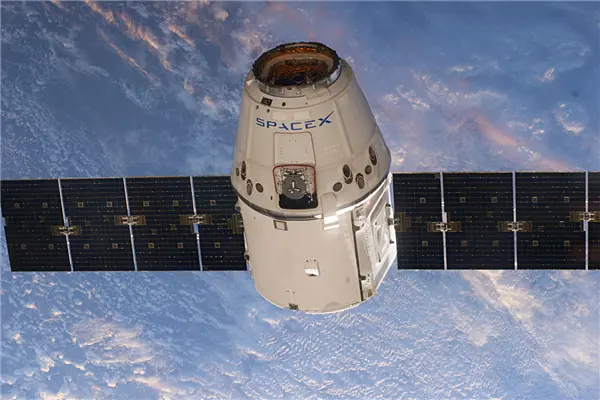(THE WALL STREET JOURNAL) EntrepreneurElon Musk’s space-transportation company vertically landed part of a used rocket on a floating platform Friday after several frustrating near misses.
Mr. Musk and other senior officials of Space Exploration Technologies Corp. have long described such a feat as essential to their long-term goal of dramatically reducing the cost and accelerating the pace of launching payloads beyond the atmosphere.
The website of SpaceX, as the company is called, says that the ability to fully and rapidly reuse rockets is the “pivotal breakthrough needed to reduce the cost of space access.”
The closely held Southern California startup began operations less than 15 years ago in a converted warehouse with barely a dozen employees. Mr. Musk—its founder, chairman and chief technical officer—has now accomplished what many veteran aerospace executives once dismissed as a far-fetched ambition: landing the largest and most expensive portion of a spent booster back on earth, and managing to achieve the same type of pinpoint touchdown on a specially outfitted barge.
Mr. Musk, who for months has talked about the challenges of returning his Falcon 9 rocket’s first stage to a floating platform, was understated in announcing the success. “1st stage has landed” on target, the company tweeted. SpaceX refers to the platform by the name “Of Course I Still Love You.”
Friday’s long-awaited landing occurred minutes after SpaceX successfully launched another unmanned cargo capsule to the international space station under a continuing contract with the National Aeronautics and Space Administration.”
SpaceX previously landed the same part of another used Falcon 9 back on solid ground, near its Florida launchpad.
One of the unresolved questions facing both the agency and Mr. Musk is how easily such reused booster sections can be refurbished and made ready for another mission. It also isn’t clear how many missions SpaceX plans to get from each booster, once the novelty of such landings fades.
NASA officials have publicly supported the company’s reusability goals—which are shared by a number of SpaceX rivals—but commercial satellite operators have played down the trend’s significance.
The inaugural ocean landing in calm conditions capped four earlier failed landings on floating platforms, each one with technical glitches resulting in the rocket’s first stage slamming down too hard or toppling over.
Friday’s afternoon blastoff from Florida’s Cape Canaveral Air Force Station also marked the company’s first successful cargo launch for NASA since last June’s catastrophic explosion of a Falcon 9 barely two minutes into its flight. That accident was caused by a defective internal structural part, and the company has since revamped its quality-control checks and other safety and reliability procedures.
With a flawless liftoff followed by a precise return this time to what the company calls a football field-sized “autonomous spaceport drone ship,” Mr. Musk told reporters “the rocket landed instead of putting a hole in the ship or tipping over.”
At a news conference after the launch, Mr. Musk also was quoted describing the touchdown as comparable to “trying to land on a postage stamp.” An enthusiastic Mr. Musk called it “another step toward the stars.”
The SpaceX chief’s publicly stated goal is eventually to colonize Mars, though at this point those ambitious plans are separate from NASA’s hopes of landing an astronaut on Mars after 2030.
Typically, the lower portions of spent big rockets end up falling into the ocean after launch. But SpaceX officials have predicted they may reuse recovered rocket stages after test firing them on more than a handful of occasions.
Blue Origin LLC, the fledgling space company founded and run by Amazon.com Inc.’s chairman Jeff Bezos, also has been pushing the envelope on reusability. Blue Origin has launched and landed the first stage of its smaller, less powerful suborbital rocket, called New Shepard, three times.
But Mr. Musk’s success required more complex maneuvers of the spent rocket, partly due to higher return speeds and challenging re-entry angles.
More broadly, Friday’s landing also was a breakthrough for the fledgling commercial space industry, which last year attracted an least an estimated $2 billion in total corporate and venture-capital investment. The segment covers everything from advanced earth-imaging satellites to tiny satellites designed to provide inexpensive, global Internet connections.
SpaceX’s multibillion-dollar order backlog includes many commercial missions. The company also is poised to capture Pentagon business, now that its rocket has been officially cleared for sensitive national-security launches.
Mr. Musk’s next-generation booster, able to lift significantly heavier payloads than current versions, is slated to have its maiden flight later this year.
 简体中文
简体中文

